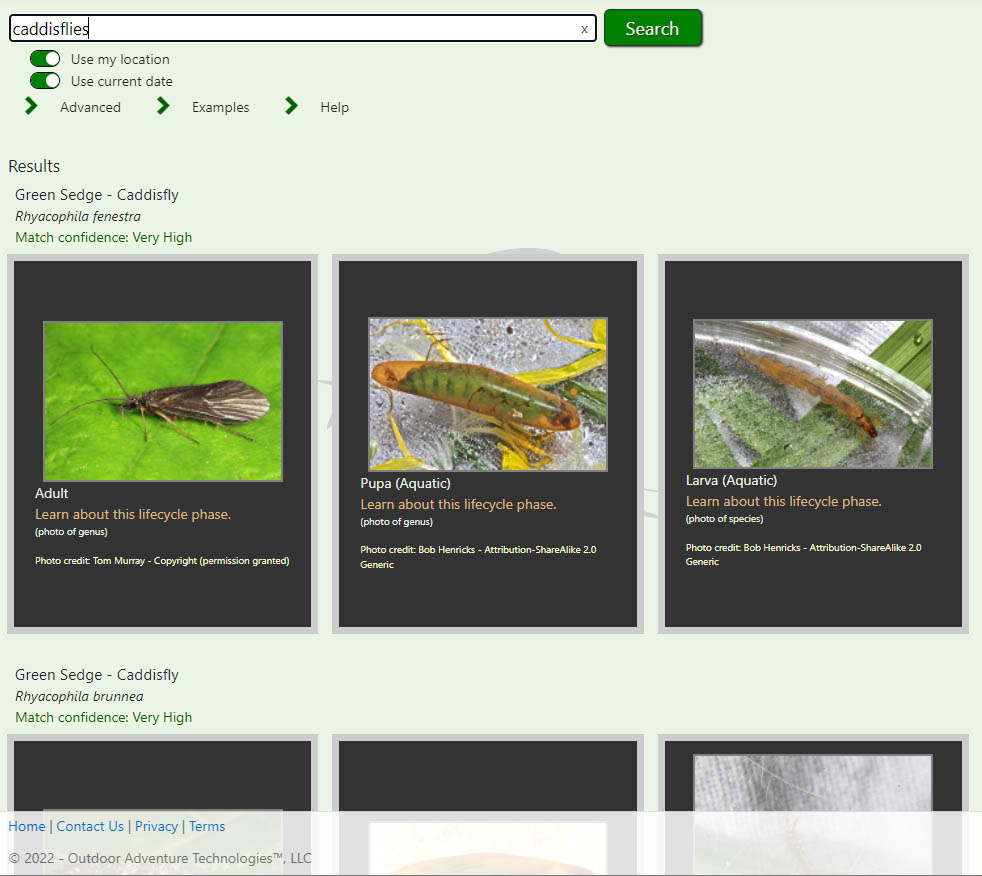The Caddisfly, Order Trichoptera.
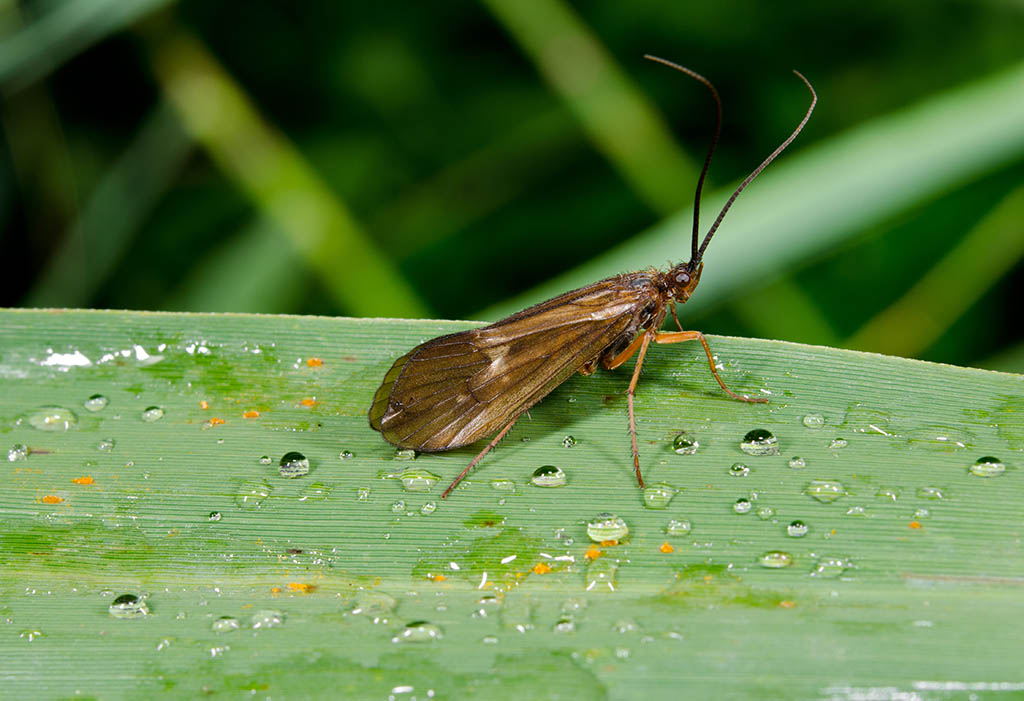
The caddisfly order is widely distributed and inhabits diverse habitats, from cold, fast mountain streams to warm stillwater. The adult insect is characterized by tent-style wings that fold over the body when not in flight, no tail or tails, and prominent antennae. The caddisfly undergoes complete metamorphosis, with its lifecycle composed of egg, larva, pupa and adult. Caddisflies are somewhat tolerant to pollution and the presence of heavy metals so their populations can be strong in waters that are completely devoid of less pollution-tolerant orders like mayflies and stoneflies.
Mature caddisflies range from tiny, around three (3) millimeters, to fairly large at nearly an inch-and-a-half or thirty-four (34) millimeters. Nearly all of a caddisfly's life is spent underwater as a larva, with most spending a year in the larval form. As it prepares for adulthood, the caddisfly seals itself in a silk, pupal cocoon and goes through metamorphosis into its final, adult form.
Most caddisfly swim or ascend with the aid of gasses accumulated in their pupal cocoon to the surface of the water, while some crawl to shallow water to hatch into their adult form and quickly fly away to mate. Some species of caddisflies hatch in huge numbers creating massive, blanket hatches and mating swarms. The Mother's Day Caddis hatch is one such event where there can be so many naturals on the water that it's nearly impossible to tempt a trout to eat an imitation. Others hatch sporadically, but among the sparsely-hatching caddisflies there are sizable species that are tempting meals to even the largest fish. Female caddisflies vary by species in their method of depositing eggs after mating. Some dap or skitter on the surface, while others dive into the water and deposit eggs on vegetation or structure.
Fishing caddisflies — matching larvae and pupae.
Most of a caddisfly's life is spent underwater. There are three types of caddisfly larvae: free-living, net spinners and case makers.
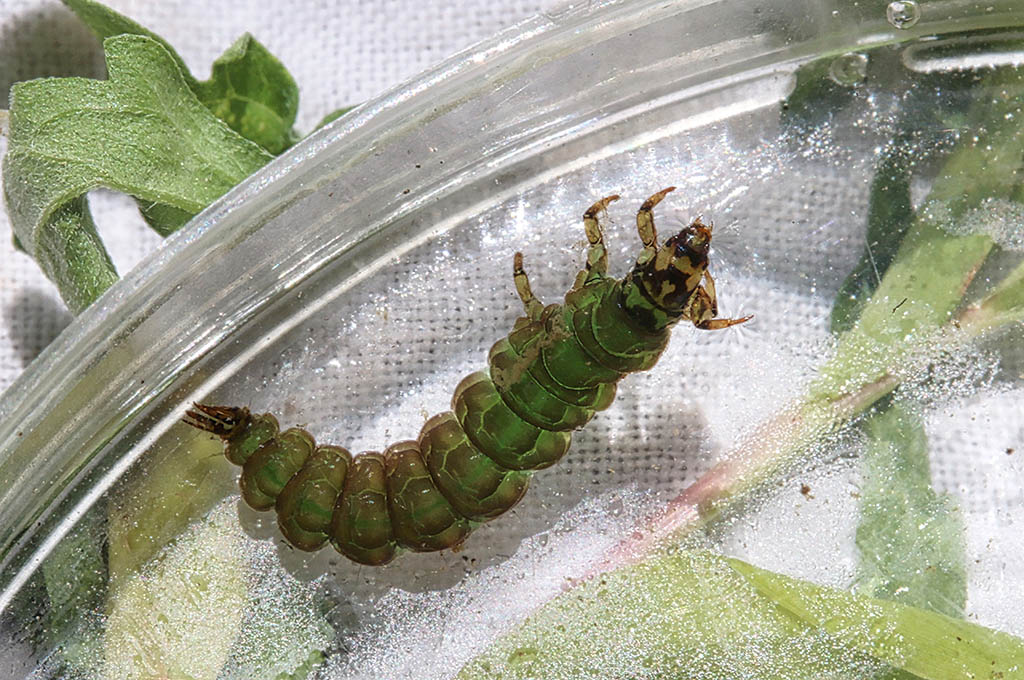
Photo credit: Bob Henricks - Attribution-ShareAlike 2.0 Generic
Free-living caddisfly larva do not build cases nor do they use nets to capture food items. These predatory larvae hunt insect larvae by moving around the stream bed under and in between the rocks and gravel. They usually inhabit medium to fast, highly oxygenated water. Most free-living caddisfly species exhibit a daily drift behavior in which, typically around midday or during the night, the insects allow themselves to drift downstream. For this reason free-living caddis larvae are a consistent source of food.
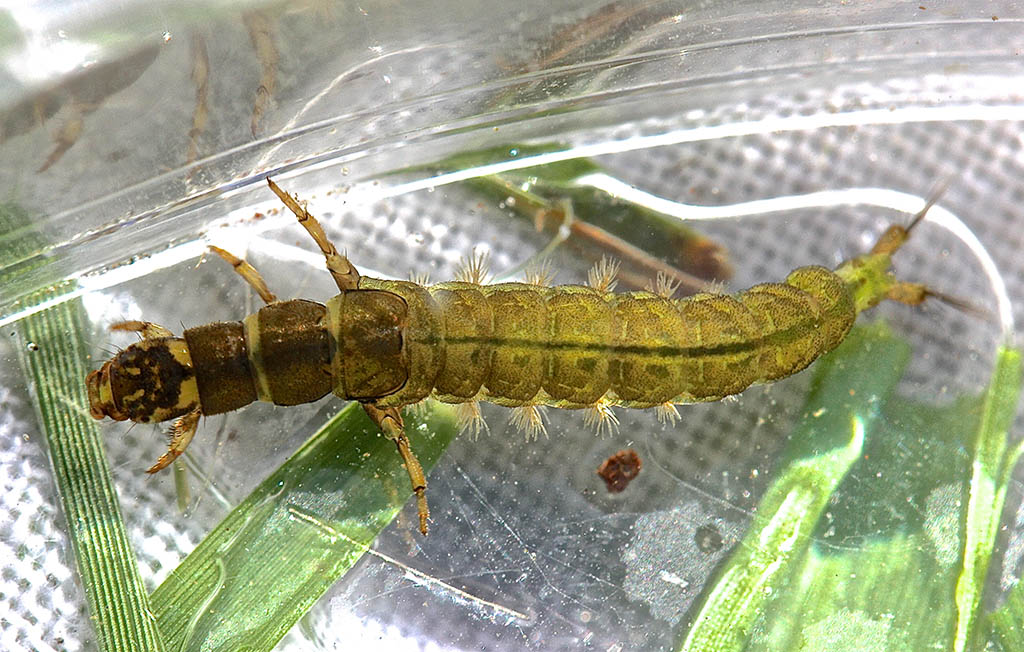
Photo credit: Bob Henricks - Attribution-ShareAlike 2.0 Generic
Net spinner caddisfly larva create homes, sometimes called 'retreats,' in between small rocks and structure on the stream bed constructing it with plant matter and woody material, and spinning silken nets positioned to capture food items as they drift downstream. These retreats are usually positioned in fast water in order to capture sufficient amounts of food. Net spinners also exhibit the drift behavior making them available as a food source throughout the year, and sometimes move between rocks by using a silken strand much like a rappelling line.
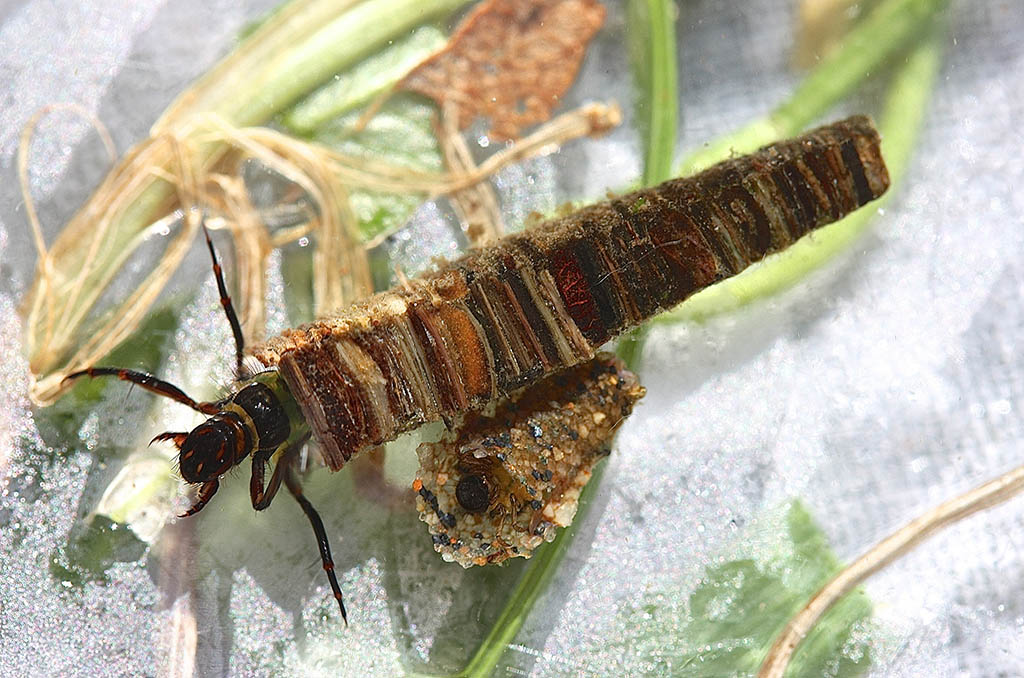
Photo credit: Bob Henricks - Attribution-ShareAlike 2.0 Generic
Case maker caddisfly larva, sometimes referred to as 'periwinkles,' construct protective cases around themselves by emitting a glue-like substance. Depending on the species, these cases might be composed of tiny pebbles, or woody debris, and vary from very rough to quite smooth construction. Case makers move around on rocks in the stream bed and feed on detritus and algae by 'peeping' out the front of their case, extending their thorax and legs and dragging their case along the stream bed. They generally live in slow sections of streams and stillwater as they are unable to deal with strong current. When threatened they retreat fully inside their case. However, sampling the contents of trout stomachs shows that they certainly feed on fully cased caddis when available.
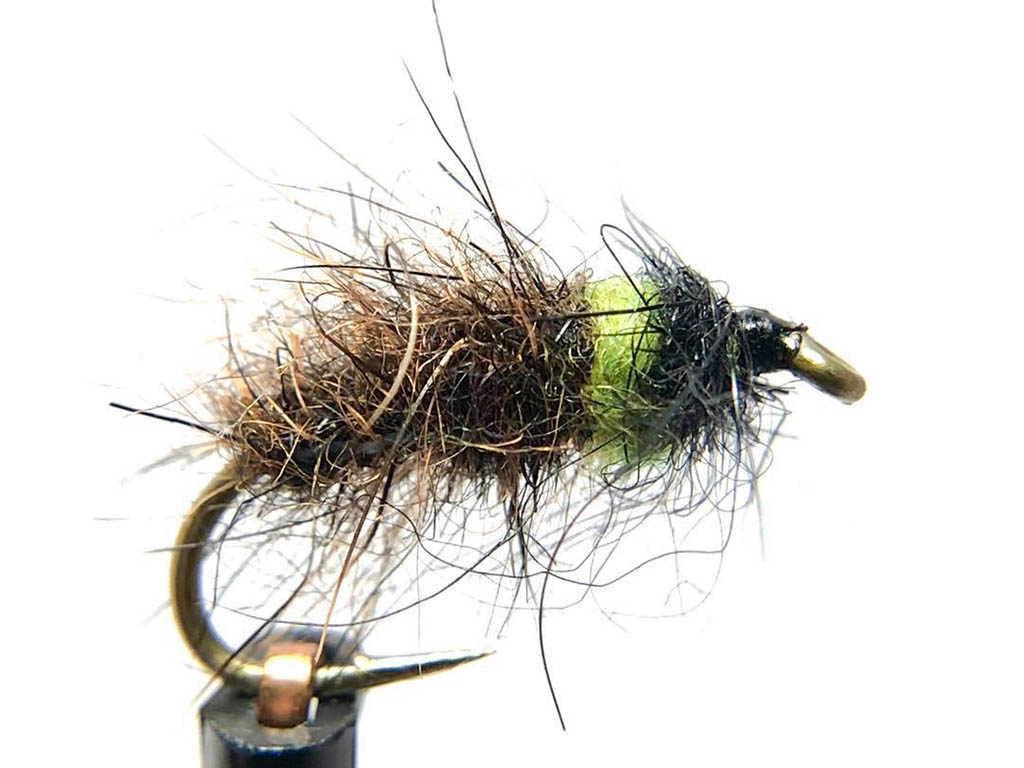
Caddisfly larvae, like other aquatic insects, are sometimes dislodged and swept into current, the likelihood of which is higher as stream flows increase. In addition, many species of caddis exhibit a daily drift behavior in which they intentionally allow themselves to drift downstream. Fish caddisfly larva as you would fish other nymphs: deep and ticking the bottom. Caddisfly larva are completely unable to swim and, when caught in current, wiggle and thrash back and forth. You want to imitate larvae that have lost their grip on the bottom and are tumbling helplessly in the current trying to get a hold on structure.
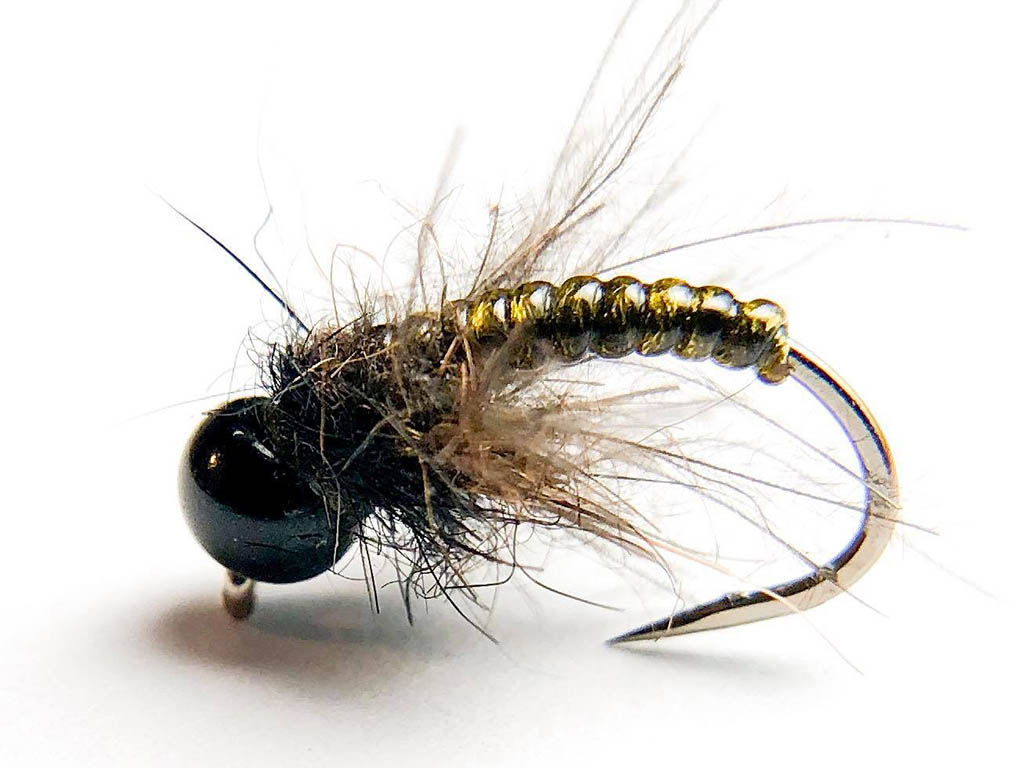
Fishing a caddisfly pupa is a game involving the imitation of a mature pupa rising through the water column in an attempt to hatch into its final, adult form. Gary Lafontaine's Emergent Sparkle Pupa is an amazing fly for fishing caddisfly hatches as it simulates the silken, pupal shuck filled with gas, which sparkles in the light, while the adult is trapped in the surface film as it emerges. Similarly, the Deep Sparkle Pupa is tied with a beadhead and fished deeper in the water column, representing the pupa as it rises to the surface.
When pupa begin to hatch and rise through the water column, techniques that imitate a rising pupa become very effective. The Leisenring Lift technique, and the use of lighter flies that produce a lot of movement are suggestive of an emerging insect and effectively draw strikes. Soft hackles, wet flies, and flymphs are very effective during the early phase of a hatch while fish are still focused more in the mid-to-upper portions of the water column.
Fishing caddisflies — active adults.
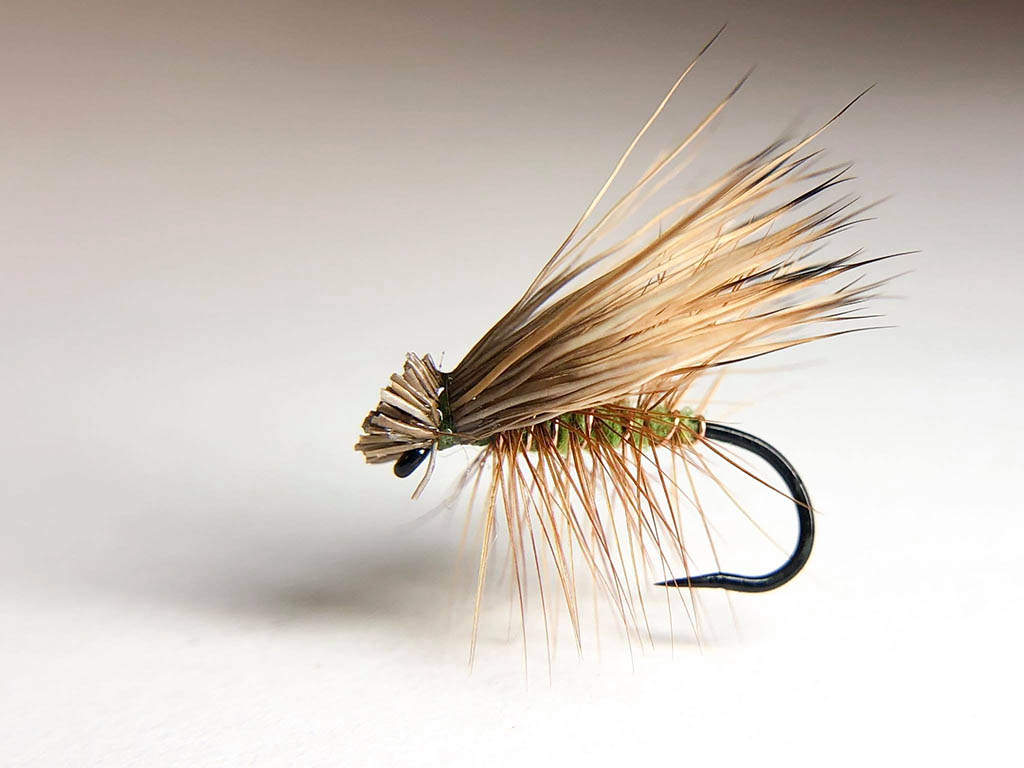
Adult caddisflies are very active when they are on the surface. You can determine that fish are feeding on caddisflies as their rise forms are anything but subtle as they pursue the fast moving insects. Splashy rises are the norm when trout are feeding on both hatching and egg-laying caddis. They skitter around with their wings flapping and make a general ruckus, which makes the Fluttering Caddis and similar patterns excellent choices for active, adult caddisfly patterns.
While fishing caddisfly adults should normally be done in a very active manner, there are times that a more sedate drift works well. However, unlike the required dead drift presentations when fishing mayflies, caddisfly drifts should normally be interrupted occasionally with short twitches, pops, skittering movements, and at times fully skating the fly.
Egg laying methods vary among species. Since some species' females lay eggs by diving into the water, drowning your dry fly at the end of a drift and swimming it with short twitches and pulls underwater can be deadly. The bottom line is to forget everything you know about fishing mayflies when you're fishing a caddis adult. Get creative with your drifts and find the level of activity and movement that the fish want.
Try searching Hatchpedia using the single keyword 'caddisflies' with the 'Use my location' and 'Use current date' options selected to see a photographic list of caddisflies that are known to hatch in your area this time of year.
When you register for a free 7-day trial you get full access to the Hatchpedia website as well as all of the features in the iPhone and Android apps. Our mobile apps work with no internet access or cell service so you will be able to figure out what's hatching when it matters: while you're waist deep in a backcountry lake way out of cell range.
Fishing caddisflies — does it get better?
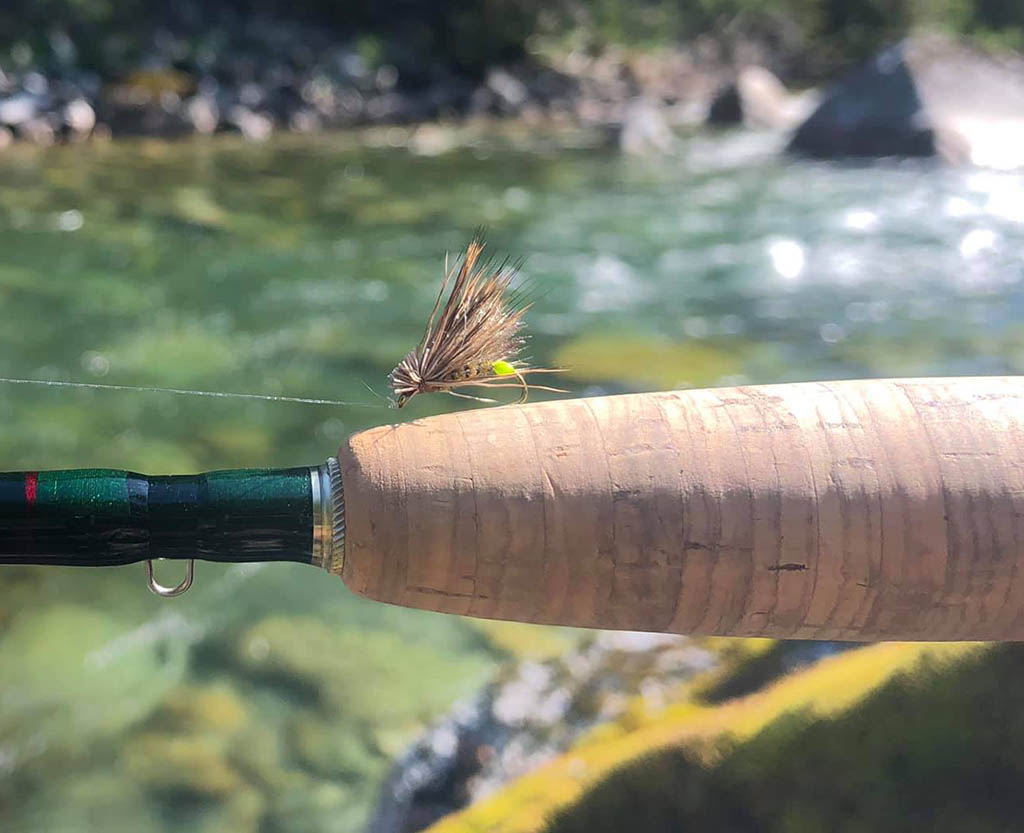
From Spring thru Fall caddisflies provide great angling opportunities. Springtime hatches like the ubiquitous Mother's Day Caddis hatches, and the big, halloween-colored Fall caddis get most of the fanfare. However, sometimes it seems that there is nothing better than fishing caddis dries on a mountain stream in the Summer. Life might be at its simplest when the fish are looking up and all you have to tie on is an Elkhair Caddis, with little twitches and skitters drawing electrifying strikes from hungry trout.
If you'd like to easily identify the insects that you encounter on the water, register for a free 7-day trial.
Your web subscription gives you full access to the iOS and Android apps, as well as this website for account management.
You'll be able to use the app with no cell service or internet for two weeks so you're completely covered. Deep in the backcountry Hatchpedia will continue to help you identify insects when it matters - while you're on the water.
